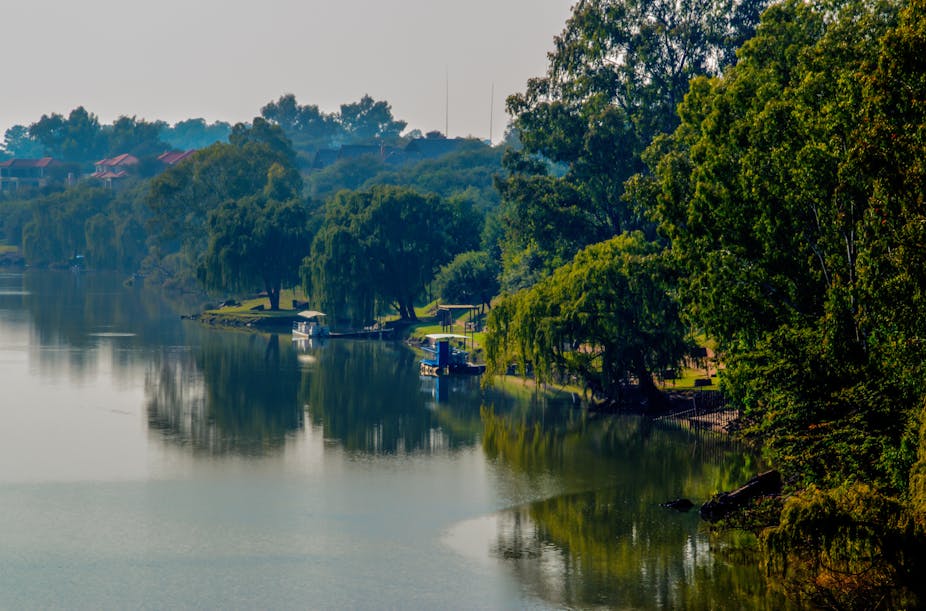The dangers of plastics, and more specifically microplastics, is increasingly grabbing the world’s attention. A growing body of research shows that plastics and microplastics in the marine environment are having a devastating effect on life in the sea. The impact has been tracked particularly closely in laboratory setups where conditions can be managed and effects monitored.
At any size, plastics pose a threat to living organisms. In the sea they can block whales’ digestive tracts, entangle sea turtles and affect the photosynthesis of algae. They’re also a problem in rivers and fresh water lakes.
Microplastics are generally understood to be pieces, particles, or fibres less than 5 mm long. They have three major sources. The first is when large bits of plastic break down into tiny pieces not clear to the eye. The second is when fibres are shed from fabrics during use and washing. And the third is microbeads. These are also tiny and are manufactured to be used in products ranging from tooth paste to facial scrubs, and sandblasting.
The use of plastics has become ubiquitous over the past 50 years. Most consist of stable polymers that have lots of useful properties. They are light in weight, strong, pliable and can be made into many different forms. And by combining plastics with a range of additives, products can be dramatically changed. This extends from colour to hardness and pliability.
This means that they can be used in a host of innovative ways including affordable food protection and packaging, piping, ropes and netting, construction materials and windows. But, in most cases, products made out of plastic have a long durability and often outlasting their utility. They eventually become waste and enter the environment.
A great deal of research has been done on the effect of microplastics on marine life as well as fresh water in developed countries. But the knowledge gaps in developing countries such as South Africa are huge.
At the request of South Africa’s Water Research Commission – South Africa’s premier water knowledge hub – we recently undertook a scoping study of microplastics in freshwaters in the country’s economic powerhouse Gauteng and an area to the south of the region.
We found that surface water from the Vaal River – the largest tributary of the South Africa’s longest river, the Orange River – was highly polluted with fragments. This is most likely due to water draining into the river from industries in the area. We also found that fibres were more abundant in rural rivers, possibly due to untreated laundry water entering these rivers.
The problem
Because plastics are relatively new in the environment, many organisms can’t discriminate between food and non-food and ingest plastics as part of their diet.
Humans and animals are adapted to handle natural particles in water, air, and food. But the way the new addition of synthetic polymer particles in our environment is dealt with is less well known.

The indications are that some organisms don’t handle microplastics well, while others seem to be able to discriminate better between food and non-food items.
Very small particles are now also known to be able to cross the plasma membranes of animals, entering cells. What the effects of these may be on molecular, cellular, organ, and organismic levels are not well understood. But they may be significant.
The research
Our study focused on surface water from various rivers draining into the Crocodile, Olifants and Vaal River drainage basins. For scoping purposes, municipal water samples from Tshwane and Johannesburg were taken as well as ground water samples from the Potchefstroom area in the North West province.
We found that there were indeed high levels of microplastics in the water. But our findings are only the beginning of what should be a much more intense research endeavour.
For example, we still don’t understand a wide range of factors that affect the release, transformation and transportation of microplastics. We also don’t know enough about their composition. And there’s also a great deal to learn about the leaching of chemicals from plastics under South African conditions, including high temperatures, dry periods, and ultra violet.
In addition, we need to establish whether or not airborne microplastics contribute to the microplastic load in South African water systems. Recent international studies also show atmospheric fallout as a source of microplastic contamination.
What now?
Experience in other countries shows that one of the most effective actions that can be taken is the immediate ban on microbeads, and products containing microbeads.
We also suggest a review of laws and regulations elsewhere to provide a guide on how South Africa can strengthen its responses to plastic pollution. In particular, the country needs to develop laws around plastic packaging which seems to be the most obvious and visible component of inland plastics pollution.
The plastics issue in South Africa – and the world – can only be addressed with a concerted effort by producers, retailers, designers, consumers, scientists, conservationists, government, and society. Although laudable, recycling isn’t the complete solution. More is needed.
Given market forces and few regulations, meaningful voluntary reduction of the plastic components of packaging, or promoting the use of recyclable or re-usable plastic products (which are more expensive), seems remote. But even remote opportunities should be pursued and opportunities investigated.
South Africa could take a leaf out of the European Union’s book. It recently released a strategy that aims to transform the design of plastics, how it is produced, used, and recycled for a more resilient plastics industry. A similar approach could be followed in South Africa, although the country’s circumstances, such as the high number of jobs provided by the plastics industry, must be given serious consideration.
Carina Verster, a post-graduate student, was the co-author on this article.

